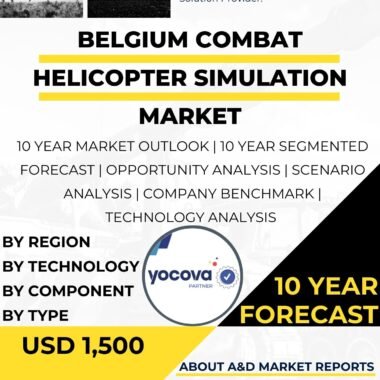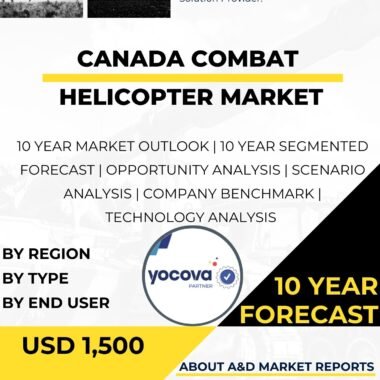Description
United Kingdom Combat Helicopter Market: Overview
The United Kingdom combat helicopter market is a vital part of the country’s defense industry. Combat helicopters provide the armed forces with advanced rotary-wing aircraft capable of attack, reconnaissance, troop transport, and search and rescue missions. They offer versatility, agility, and firepower, making them indispensable assets on the battlefield.
Strategic Importance of Combat Helicopters
Investment in combat helicopters reflects the United Kingdom’s commitment to maintaining a capable and credible air force. These helicopters support ground operations, provide close air support, and enhance overall air superiority. They are essential for both domestic missions and international deployments.
Domestic Development and International Collaboration
The United Kingdom combat helicopter market relies on domestic production and international partnerships. British companies, including BAE Systems, Leonardo Helicopters, and Airbus Helicopters UK, design and manufacture helicopters tailored to the needs of the UK Armed Forces.
International collaborations allow for cost-sharing, technology transfer, and diplomatic cooperation. Partnerships with allied nations also strengthen defense ties and accelerate the development of advanced helicopter capabilities.
Combat Helicopter Fleet and Platforms
The United Kingdom operates a diverse combat helicopter fleet, each designed for specific missions:
-
Apache AH-64 – A formidable attack helicopter capable of precision strikes and engaging enemy armor.
-
Wildcat HMA Mk2 – A maritime helicopter armed with anti-ship missiles and torpedoes for naval operations.
-
Chinook HC Mk6 & Puma HC Mk2 – Multi-role helicopters used for troop transport, logistical support, and search and rescue missions.
Operational Applications
Combat helicopters enhance military efficiency across various scenarios:
-
Conventional Warfare – Providing fire support and close air support to ground troops.
-
Urban Operations – Offering precision strikes with agility in complex environments.
-
Counter-Terrorism and Counter-Insurgency – Conducting reconnaissance, intelligence gathering, and disrupting hostile networks.
-
Humanitarian Missions – Supporting disaster relief, evacuation, and medical assistance in challenging conditions.
Training and Safety Protocols
The United Kingdom Armed Forces conduct rigorous training for pilots and aircrew. Specialized programs cover helicopter operation, mission planning, and tactical employment. Strict rules of engagement and adherence to international humanitarian law guide operations to minimize civilian risk.
Challenges in the United Kingdom Combat Helicopter Market
The market faces several challenges:
-
High costs of development, maintenance, and operation.
-
Rapid technological advancements requiring ongoing research and upgrades.
-
Integration of multiple systems and technologies to ensure interoperability and optimal performance.
Continuous investment in research and development helps the United Kingdom maintain cutting-edge capabilities and adapt to evolving threats.
Future Outlook
The United Kingdom combat helicopter market will continue to grow as the armed forces modernize. Domestic development, international collaboration, and strict safety protocols ensure effective combat helicopter capabilities. These aircraft enhance military readiness, support international security efforts, and assist in humanitarian missions worldwide.




